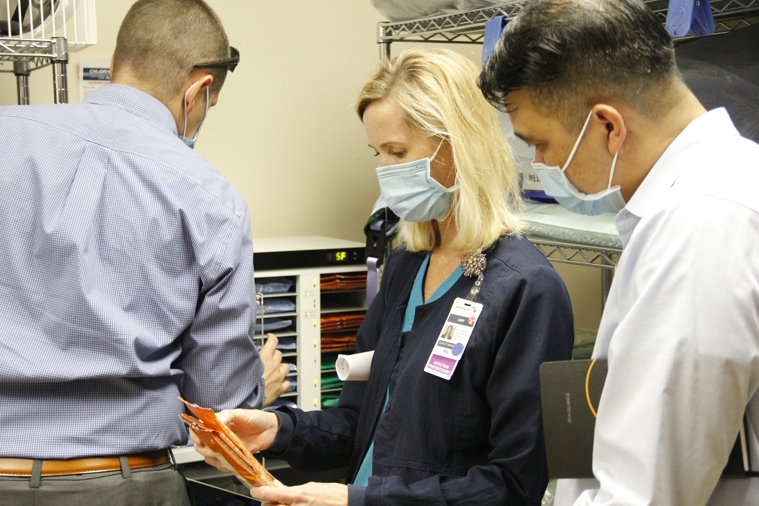Is Omicron BA.2 Variant a Cause for Concern?
Apr 1, 2022

Miller Report for the Week of March 28th, 2022; by William Miller, MD; Chief of Staff at Adventist Health – Mendocino Coast Hospital
BA.2 is a new subvariant of Omicron which was first identified in the Philippines in November. The original variant of Omicron is referred to as BA.1. Both BA.1 and BA.2 are more contagious than the previous Delta variant. However, BA.2 is more contagious than BA.1 and as a result is quickly replacing BA.1 as the principal variant around the globe. This is what we have seen with each new variant and is no surprise.
Early after it’s identification, BA.2 was dubbed a “stealth variant” which was both inaccurate and mostly news reporting hyperbole. The variant is not any more difficult to detect using our PCR tests than any other variant. Nor does it evade our immune system’s ability to detect it. The term “stealth” was attached to BA.2 because initially it was difficult to tell the difference between it and Delta. However, as testing has become more specific, this is no longer an issue. This unfortunate misrepresentation may have led to unnecessary anxiety for some.
The CDC’s website succinctly sums up the information about mutations and variants as follows, “Viruses constantly change through mutation and sometimes these mutations result in a new variant of the virus. Some variants emerge and disappear while others persist. New variants will continue to emerge.” When a new variant has developed some way of getting an edge over previous variants, it will out-compete the others and become the dominant one. In the case of SARS-2, the virus that causes the disease COVID, the mutations that give such advantages mostly involve the spike protein. Recall that this is the protein that acts as a “key” to unlock a receptor on the host cell allowing it entry into the cell. With time, through trial and error, better and better keys giving an increasingly more perfect fit eventually develop. A better fitting key means easier transmission and as a result the new variant will be more contagious than the previous variants.
Both versions of Omicron cause less serious illness than previous variants and much less than Delta in particular. And despite BA.2 moving through Europe, Israel and the United States, hospitalizations continue to decline in those areas.
With a new variant, a valid question is whether it has also developed a way of evading our immune defenses. Those defenses are based on antibodies which circulate in our blood stream and must attach to the virus so that our immune cells can attack and destroy it. If the antibody attachment site on the virus surface changes, then the effectiveness of our immune response may go down. Fortunately, the protection against serious illness provided by both vaccination and prior infection seems to remain as strong against BA.2 as it does against BA.1. A report in the journalNatureon March 18thdiscussed the results of a study involving over 1 million people in Qatar. The study concluded that while vaccinated people can still get Omicron, two shots of either Pfizer or Moderna gave 68% protection against serious illness and a booster shot improved this to over 80%. The results were the same whether a person caught BA.1 or BA.2. This protection was maintained out to 7 months, which was the range that the study looked at.
It is estimated that about 95% of adults in the US have immunity against COVID at this point either through getting fully vaccinated, having had COVID or both, with 66% being fully vaccinated. As a result, it is unlikely that the BA.2 variant will cause a surge in cases like some of the previous variants. However, BA.2 is the most contagious variant yet, as was BA.1 when it first emerged. So, we should expect to see it continue to spread through the US, but not cause a surge in new cases requiring hospitalization. People who are not immune, either because they remain unvaccinated and have not yet gotten COVID, will be at high risk of catching COVID if exposed to BA.2.
If all this is true, then why are we seeing an outbreak in China right now? China has had a “Zero COVID” policy under which there is a mandatory 2-week quarantine of anyone entering the country and there have been strict lockdowns of any place where COVID cases are found. As a result, China has had relatively few cases of COVID since the original outbreak in Wuhan. China has reported no COVID related deaths during the past 12 months and only 4,638 COVID deaths in total since the start of the pandemic, almost all from the initial outbreak.
What is making news headlines now is the lockdown that is occurring in Shanghai which is China’s largest, wealthiest city and a major financial hub for the country. The outbreak of BA.2 began in Hong Kong with its ties to both mainland China and the West. The spread of the disease to Shanghai is attributed to the movement of people, including business and high-tech workers, between Hong Kong and the rest of China. Shanghai, which has 25 million residents, is now experiencing an outbreak, but by comparison it is currently relatively small. There have only been about 3,500 positive cases identified of which only about 50 are symptomatic and there has been one death. However, following the government’s “Zero COVID” strategy, all 25 million residents of the city are going into lockdown and all will be tested for COVID. The lock down is planned to last only 3 days, however, the last time this happened the Chinese government kept portions of the city in lockdown for over 3 weeks. Even without these harsh measures, China is unlikely to experience a widespread surge as 88% of the country’s 1.2 billion people are fully vaccinated.
Returning closer to home, 23% of new cases in the US are currently BA.2 and about 40% in California. As with every other variant encountered thus far, masking remains highly effective in preventing transmission as does social distancing and handwashing. It is expected that we will likely see a slight increase in cases locally simply due to its higher rate of contagion, but a surge that leads to repeat of public health restrictions or a strain on hospital beds seems unlikely.
Related articles

Caring for a loved one with COVID-19 at home
July 27, 2020

What to consider when choosing to gather
July 2, 2020

‘Things have changed so rapidly’: Infection preventionist navigates ever-changing guidelines to keep frontlines safe amid pandemic
February 24, 2021